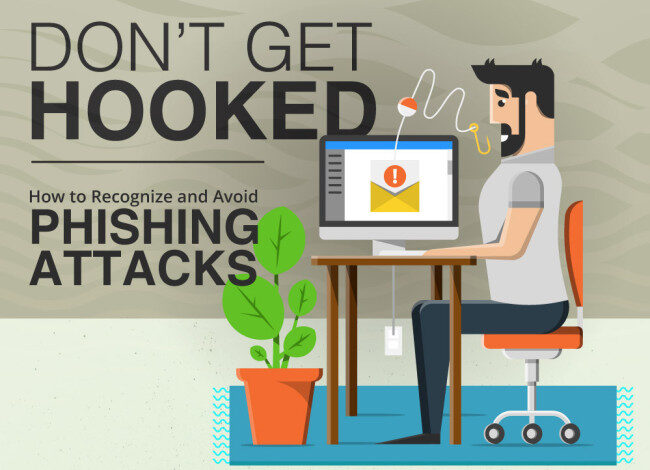Staying Safe Online: Your Guide to Cybersecurity

Staying Safe in the Digital World: A Guide to Protecting Your Data & Devices
We live in an increasingly digital age. From online banking and shopping to social media and streaming entertainment, our lives are deeply intertwined with technology. While this connectivity offers incredible convenience and opportunity, it also opens us up to a growing number of cyber threats. Protecting your personal data and devices isn’t just about preventing inconvenience; it’s about safeguarding your finances, identity, and reputation.
This post will provide practical tips and advice on how to navigate the digital landscape safely. We’ll cover everything from strong password habits and recognizing phishing scams to understanding malware and keeping your devices secure. Let’s dive in!
Password Management: Your First Line of Defense
Passwords are the gatekeepers to your online accounts, so treating them with care is absolutely essential. Far too many people use weak or reused passwords, making themselves easy targets for hackers.
Here’s what you need to know:
- Use Strong Passwords: A strong password should be at least 12 characters long and include a mix of uppercase and lowercase letters, numbers, and symbols (e.g., !@#$). Avoid using easily guessable information like your birthday or pet’s name.
- Don’t Reuse Passwords: This is *critical*. Reusing the same password across multiple accounts means that if one account is compromised, all others are at risk. Imagine a hacker gaining access to your email—they could then try that same password on your bank or social media accounts!
- Use Password Managers: Manually creating and remembering dozens of unique passwords is nearly impossible. That’s where password managers come in. These tools securely store all your passwords, generate strong ones for you, and automatically fill them in when needed. Popular options include LastPass, 1Password, and Bitwarden. Many browsers also offer built-in password management features – utilize these if available!
- Enable Two-Factor Authentication (2FA): Whenever possible, enable 2FA on your accounts. This adds an extra layer of security by requiring a code from your phone or email in addition to your password. Even if someone manages to guess your password, they won’t be able to log in without that second factor.
Phishing Scams: Spotting the Bait
Phishing is a deceptive technique used by cybercriminals to trick you into revealing personal information by disguising themselves as trustworthy entities like banks, retailers, or even government agencies. These scams often come in the form of emails, text messages (smishing), or phone calls.

Here’s how to recognize and avoid phishing attempts:
- Be Suspicious of Unexpected Emails: If you receive an email from a company you don’t regularly interact with, be very cautious. Verify the sender’s address – does it look legitimate? Hover over links without clicking to see where they lead (but *don’t* click!).
- Watch Out for Urgent Requests: Phishing emails often create a sense of urgency – demanding immediate action or threatening account closure. This is designed to pressure you into acting before thinking.
- Poor Grammar and Spelling: Legitimate organizations typically have professional communications. Numerous grammatical errors and typos are red flags.
- Don’t Click on Links in Suspicious Emails/Texts: Instead of clicking, go directly to the company’s website by typing the address into your browser.
- Verify Directly: If you’re unsure about an email or text message, contact the supposed sender directly through a known and trusted channel (e.g., their official phone number). Don’t reply to the suspicious communication itself!
Malware: Understanding the Threats & Staying Protected
Malware is a broad term for malicious software designed to harm your computer or steal your data. This includes viruses, worms, Trojans, ransomware, and spyware.
Here’s what you need to know:
- Install Antivirus Software: A reputable antivirus program can detect and remove malware before it causes damage. Keep your antivirus software up-to-date with the latest definitions. Windows Defender (included with Windows) is a good starting point, but consider third-party options like Malwarebytes, Norton, or McAfee for more comprehensive protection.
- Keep Your Software Updated: Software updates often include security patches that address vulnerabilities exploited by malware. Enable automatic updates whenever possible. This includes your operating system (Windows, macOS, iOS, Android), web browsers, and other applications.
- Be Careful What You Download: Only download software from trusted sources, such as official app stores or the developer’s website. Avoid downloading files from untrusted websites or email attachments from unknown senders.
- Beware of Suspicious Links & Attachments: As with phishing, be wary of clicking on links or opening attachments in emails or messages from unfamiliar sources.
- Ransomware Awareness: Ransomware encrypts your files and demands payment for their decryption. Back up your data regularly to an external drive or cloud service so you can restore it without paying the ransom. Never pay a ransom! There’s no guarantee you’ll get your files back, and doing so encourages further criminal activity.
Securing Your Devices: Beyond Passwords & Software
Protecting your devices goes beyond just software. Here are some additional tips:
- Firewalls: Ensure your firewall is enabled. Firewalls act as a barrier between your computer and the internet, blocking unauthorized access.
- Secure Your Wi-Fi Network: Use a strong password for your home Wi-Fi network (WPA3 encryption is recommended). Avoid using public Wi-Fi networks without a VPN (Virtual Private Network) which encrypts your data.
- Physical Security: Don’t leave your devices unattended in public places. Enable “Find My Device” features on smartphones and laptops to track them if they are lost or stolen.
- Regular Backups: Back up your important files regularly – this protects you from data loss due to malware, hardware failure, or theft.
Staying Informed
The cyber landscape is constantly evolving. Criminals are always developing new tactics, so it’s crucial to stay informed about the latest threats and best practices. Follow reputable cybersecurity blogs, news sources, and organizations for updates and tips.
Protecting yourself online takes effort, but the rewards – safeguarding your data and peace of mind – are well worth it!



